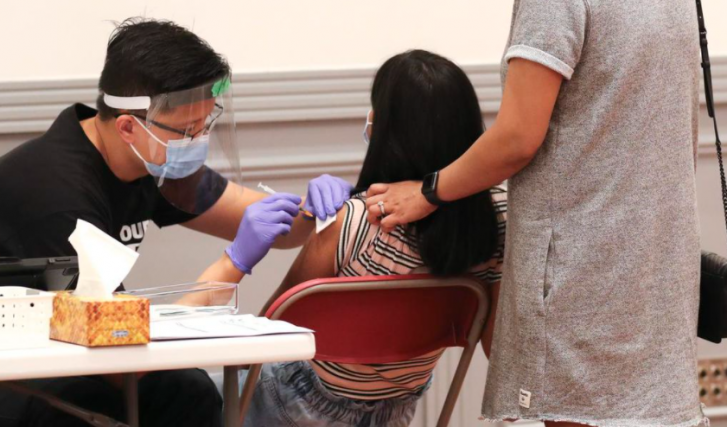Dr. Andrew Boozary has witnessed many people walk away from vaccination clinics upon hearing that their second dose would be a different brand than their first.
Boozary, who is with the University Health Network, told the Star misinformation about mixing brands is one of the factors contributing to Ontario’s vaccination numbers trending downward and on Sunday hitting the lowest single-day vaccine total since May 24.
“There’s a disconnect between any of the recommendations or even a perceived disconnect that can cause people fatigue, and some mistrust,” Boozary said, adding this leads to people not stepping forward for a first or second dose. “We’re really trying to continue to push uphill together and I think … (addressing) vaccine hesitancy is an important piece for engagement.”
Dr. Omar Khan, assistant professor at the University of Toronto Institute of Biomedical Engineering, says that part of the problem with people’s hesitancy around mixing doses has to do with the fact that Pfizer is the only vaccine approved for children 12 to 17 years old.

With a large portion of Pfizer doses being used to vaccinate eligible children ahead of school starting in September, that means what’s left available is Moderna and if people who had Pfizer for their first shot are walking away from those doses, that slows down the process.
Any shipment delays could also impact vaccination progress, if people are holding out for a particular brand preference, or, in the case of those 12 to 17, are only eligible for one, he said.
Public health officials continue to emphasize that it is safe to mix doses and try to counter the hesitancy around it.
In a press conference last Wednesday Dr. Eileen de Villa, medical officer of health for the city of Toronto, stressed, “Ontario is following the advice of the National Advisory Committee on Immunization.”
De Villa says that the studies and recommendations come from Europe and that mixing vaccine brands is safe and produces a strong immune response.
“The most important thing you can do right now is to be fully vaccinated, and especially to get your first dose,” de Villa said.
Khan says one of the other factors at play around why people may be hesitant to mix vaccines, is uncertainty around what will be allowed when trying to enter other countries. He said it was reassuring that Canada will allow people who have been fully vaccinated with doses from two different brands in, but adds, “What about Canadians trying to go out and maybe visit some family or travel?”
Boozary agrees that uncertainty on whether a mixed vaccine regimen could restrict people from travel or anything else is problematic.
“We need more communication of what this is going to look like from a policy perspective and it can’t be so piecemeal,” Boozary said.
Aside from hesitancy around mixing vaccines, Khan says another reason of the vaccination drop off could simply be tied to fatigue. When people got their first dose, their second dose was scheduled, and overall fatigue, along with it being summertime, may be leading people to not want to go through the process of trying to reschedule online.
He points out that in some places in the U.S. health units have been actively calling residents and telling them to come in for their second doses.
In Ontario, 60.8 per cent of the eligible population (12 and older) has been fully vaccinated, while in Toronto 57.3 per cent has completed vaccination.
Article From: The Star
Author: Danica Samuel

